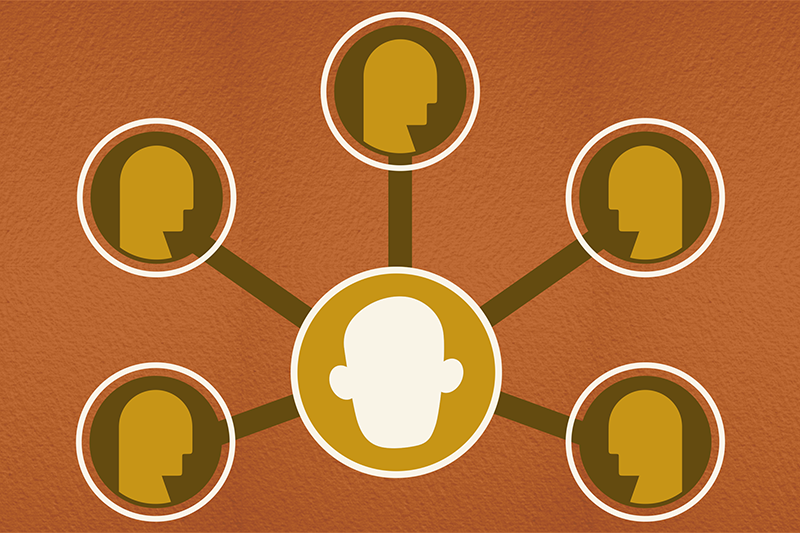
V. The Three Smartest Connections: Peer, Social, and Leverage
-
 By
David Homan
By
David Homan

When we think about why we connect, we must think about what’s at stake if we don’t. My early career involved running small organizations, founding conferences/festivals and beginning to advise wealth-holders and nonprofit executives and I had many stumbles until I realized my value to others, and my “place” in their lives and careers. Those whom I could “get a drink with” (even during the years I didn’t drink) have become my close friends and colleagues, as I trusted my intuition as I built a massive network of connections.
Expanding your outreach to build a new business/nonprofit, project, or opportunity all boils down to people. The best ideas in the world won’t turn into reality until people congregate around them. Regardless of our current opportunities, we are always looking for more, and to do so we must often place trust in new individuals to help us make this possible. As your projects become more and more successful, you meet people who, themselves, are in powerful positions and are looking to possibly engage with you and your ideas.
However, there is a big difference between getting the opportunity to meet with someone prominent and building/maintaining that relationship. Developing multiple touch-points with these new relationships is key, by focusing on individuals within your circle who can assist you by serving as your Peer, Social, and Leverage contacts.
First, you must keep two ideas in mind:
- Don’t let your own inhibitions or issues get in the way of learning about your new contact(s). The more you know about each other, the stronger your relationship can develop.
- Always offer a different perspective and have a value that can be strengthened and help you achieve your goals. Taking on a new task can be daunting, but the people you surround yourself with can make it all possible.
To connect smartly, you have to widen your circle and establish contacts to position your relationship in a way where you can maintain it during the ups and downs of business interactions. Inevitable issues arise related to a project and you may be placed in a situation that jeopardizes your relationship with your new contacts. People may simply be too busy themselves to address it, someone may misinterpret something you say, or your relationship may change because of a “transaction” like a donation, business deal, or introduction (that often comes with strings/favors in return).
Thus, as you get to develop your new relationship, figure out where you have connections in common and where you need to strengthen your relationships. You can refer to articles on the Peer, Social, and Leverage connections in more depth, but the following is a useful summary:
The Peer: The Peer is part of the same business or philanthropic circle. They may be a Board member at a group where the peer is a donor or fellow Board member, or be in a partnership with this individual.
The Social: The Social connection may exist because of a longterm friendship such as hometown or college, a previous business or social relationship, or because of a family relationship. Due to the fact that these relationships are maintained without as much intentional effort/time, having a relationship with someone socially connected to your contact is important when business or philanthropic interests transition.
The Leverage: The person with leverage can ask, imply, or even demand something that you need without fear of any repercussion or misunderstanding. This is often because the same is being asked for them, or the two individuals are intertwined in a way that this does not damage the relationship.
These three relationships may appear to be similar, and you may ask why you need all to build a more successful connection. Keep in mind that these circles constantly overlap, and someone who serves as a Peer in one instance may serve as Social or Leverage as another. If you have all three, you can maintain meaningful and lasting connections. The more you successfully connect to others, the deeper these relationships and connections become.
The end goal as you develop your own projects and achieve your own success is one the most important aspect of any goal oriented individual: Being Part of the Conversation.
Related Points to enhance how you interact:
∙ Unless you operate with integrity, don’t expect others to treat you any differently.
∙ Don’t push when you need to listen, and don’t express your need, express your passion.
∙ People are only people. They are not tools. They all have desires and goals.
* When you connect on levels beyond your business interaction, you have a well-rounded relationship. Being prepared for meeting a new contact is not manipulative, it is smart.

David Homan
Article Series:
Art Of Connecting


II. How to Elevate People’s Perceptions

